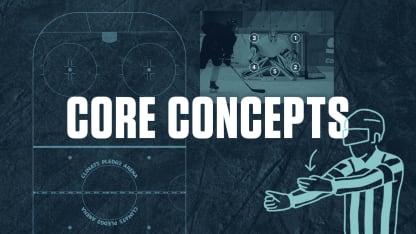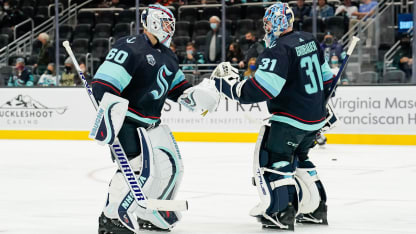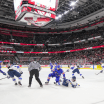To put that in perspective, if we look at the 1,019 NHL games that have been played this season (through Jan. 2), on average, a goaltender sees 31.5 shots on goal and saves 28.4 of them. Reduce that ability by 11 percent and you're closing in on three more goals against per game. That's pretty significant!
Since Tulsky's study was released, we've seen a precipitous drop in the same goaltender playing back-to-backs. And while follow-up studies by SportsMEDIA Technology's (SMT's) Andrew Thomas and The Athletic's Dom Luszczyszyn have shown the impact on save percentage may not be as significant, splitting the net in back-to-back games has become the standard we know today.
Other big-picture factors have played into the idea of managing goaltender workload.
Just as teams now address the fatigue incurred by playing two games in a row in net, they also look at the cumulative effects of total playing time (much like we see in the NBA or NFL) across a season.
Preserving your top players for long-term performance (including playoff series) is a factor in the amount of games coaches might assign to their top goaltender.
Similarly, organizations have become increasingly comfortable with building true goaltending tandems with a "1A" and "1B" goaltender (when the difference in ability is not massive) as opposed to a "starter" and "backup."
This type of roster construction gives teams much more flexibility in their deployment and, if we go back to the back-to-back scenario, if the difference in save percentage between your two netminders is less than an anticipated drop in performance in a "two games in two nights" situation, it makes sense to alternate goalies rather than suffer if the same player goes into the net two nights in a row.
Don't be surprised when you see any team use both of their goaltenders when playing back-to-backs. The order of which goaltender goes first may change-it can depend on the opponent or the number of days of rest since one last played. But splitting the net is an NHL trend that, at least for now, is here to stay.
Data via NaturalStatTrick.com; represents all situations




















